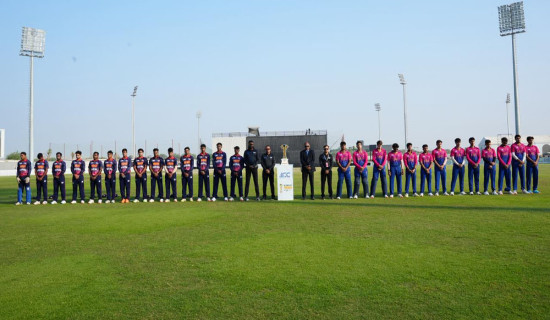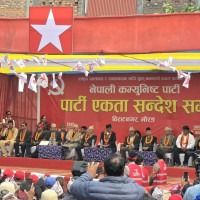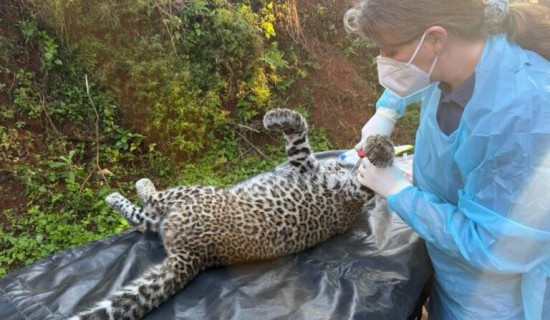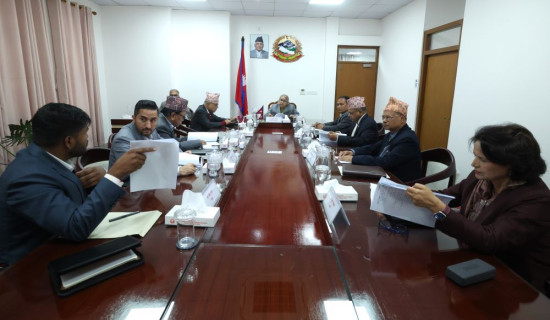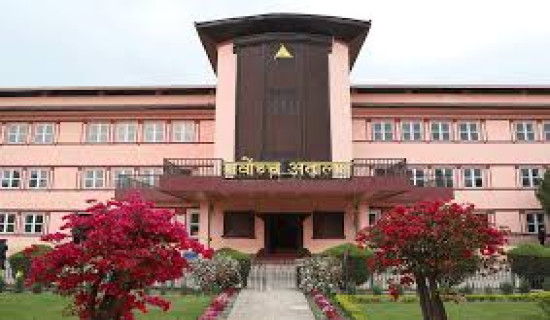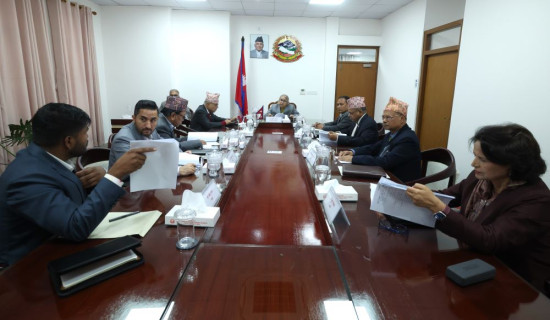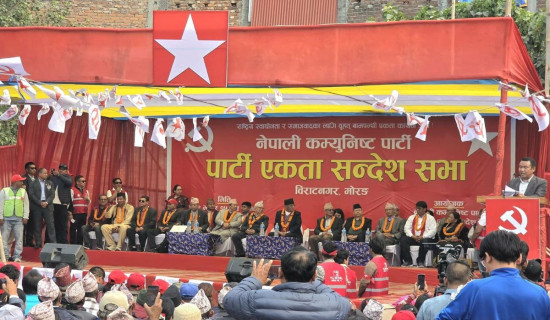- Tuesday, 2 December 2025
Fish Production: Nepal Becomes Self-Reliant
Benazir Ahmed Siddique
Nepal is moving towards self-sufficiency in fish production. As the production of fish is increasing every year, the result of fish imported from abroad is gradually decreasing. According to the Central Fisheries Promotion and Conservation Center, fish production has been increasing in the last year compared to the previous years.
Decreasing Import
The number of fish imported from foreign countries has decreased. Around 12 thousand 869 metric tons were imported in the 2021-22, while 10 thousand 756 metric tons were imported in the year 2019-20. Which is a reduction of two thousand metric tons.
According to the statistics of the Ministry of Agriculture, 77 thousand metric tons of fish are produced annually in Nepal, worth about 23 billion rupees.
According to the statistics, currently 84 thousand metric tons fish are consumed annually in the Nepal market. About 40,000 farmers are involved in fish farming across the country.
The interest of farmers in fish farming business in Nepal has increased. It seems that many farmers are attracted to this profession because it does not require much manpower and earns a lot of income.
The government has also put forward a plan to become self-sufficient by replacing fish imports. To increase the production of fish, there are around 14 farms in the country including the center.
Although the developed countries of the world consume 28 kg of fish per person per year, only 3.01 kg of fish produced in Nepal is available annually. In underdeveloped countries, 11 kg of fish per person per year has been used.
One percent of the total domestic production of Nepal is contributed by the fishing sector and three percent of the total employment. According to the center, there is a lack of availability of healthy fish in the current situation where citizens understand the importance of nutrition. Center and the states have introduced various programs to increase the production of fish in Nepal.
Various programs related to fish farming are going to be introduced to bring Nepal to the level of an underdeveloped country for the use of fish by 2031. According to the center, 80 percent of the fish currently used in Nepal is imported from domestic and 20 percent from foreign countries. 65 percent of the fish used in the capital Kathmandu is imported from India and 35 percent from various places in Nepal.

Fish is abundantly produced in the Tarai of Nepal. A lot of fish are being produced in Sirha, Dhanusha, Chitwan, Kailali, Makwanpur, Rupandehi, Kapilvastu and other districts. According to researchers, there are 252 species of fish found in various rivers and lakes of Nepal.
201 species are mostly found in Gandaki. 194 species of fish have been recorded in Kosi, 139 in Karnali and 89 in Mahakali. Among the fish found in Nepal, 16 species are native and imported. Among them, 11 species of fish have been raised commercially.
Common carp, wig head carp, silver carp, grass carp, rahu carp, naini carp, bhakur carp, tilapia, pangas, jalakpur, asla and trout have been reared commercially.
Among the different types of fish found in Nepal, trout fish is found in cold water and is sold at a high price. According to the center, trout fish is being used in high-class restaurants in Nepal. Firms are trying to grow trout fish to meet the demand commercially.
In order to manage fish farming, the government prepared and implemented the 'Fish Production Special Implementation Procedure 2072'.
Fish farming has been started by adopting some management techniques in ponds, lakes, cages and paddy fields. Recently, commercial fish farming has started even in the hilly districts. Apart from this, the work is being done through Fisheries Development Officer in District Agriculture Development Office and Technical Assistant in some more districts.
According to the center, nine research centers have been established under the Nepal Agricultural Research Council 'NARC' for the development and expansion of fish. The center is providing grant support for the construction of ponds that provide technical services to farmers, aerators (machines for increasing oxygen in fish ponds) and hatcheries (places for producing sawdust).
Most alarming issue is that the rare species of fish found in the rivers of Nepal are less visible. Mainly Asla, Saul, Buduna, Jalakpur, Teete, Garela, Setala fish are found in the rivers of Nepal. But conservationists are also concerned that their numbers are gradually decreasing.
Pollution, electrocution, excessive use of nets, dams built for hydropower and irrigation projects etc. are harmful to fish. Hilsa and Rita-Rita fish found in the rivers of eastern Nepal have stopped being seen. Fish that reach Kosi through India's Ganga river system have also decreased significantly. The density of fish in the river is also very low.
Excessive Fishing
The number is decreasing due to excessive fishing in the river. Many waterfowl are being killed recently due to 'electrofishing' (fishing with current). The movement of fish has also been disrupted due to the large dams, hydroelectric structures, floods and dams built on the rivers.
The habitats where fish flourish in the rivers of Nepal have been destroyed. The low coastal area where the fish are stuck has been swept away.
Experts say that the amount of nutrients in the river is increased by the water mixed with fertilizers flowing from the agricultural crops in the last year, and when the amount of dissolved oxygen decreases, aquatic life dies.
According to the 2018 report of the Asian Development Bank (ADB), 50 percent of Nepal's rivers have been dammed, which has affected the old course of the river. Report mentions that the construction of the dam will also affect the fish as the temperature will increase.
Government has also taken many steps to protect endangered fish in Nepal. In the Aquatic Conservation Act, 2017, there is a provision that illegal killing of fish in rivers and streams, putting poison, and killing fish with current can be punished with a fine of 5,000 rupees and up to six months imprisonment. Fish flakes are released every year in Narayani and Kosi rivers.
Around 64 types of fish were released in the previous financial year in these two rivers alone. By taking various meaningful actions Government has expected that, Nepal will be self-sufficient in fish.
(The author is a writer, social activist and pharmacist)
How did you feel after reading this news?



